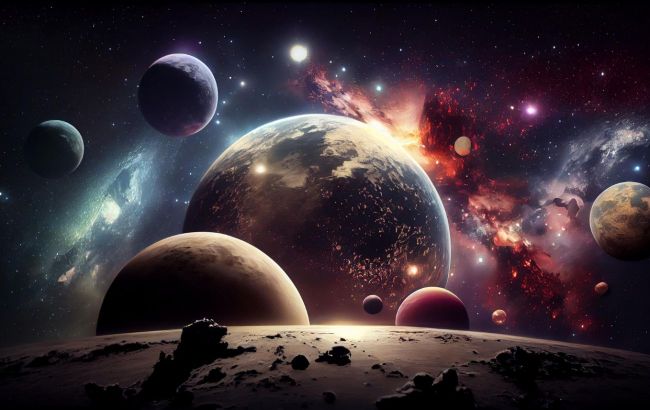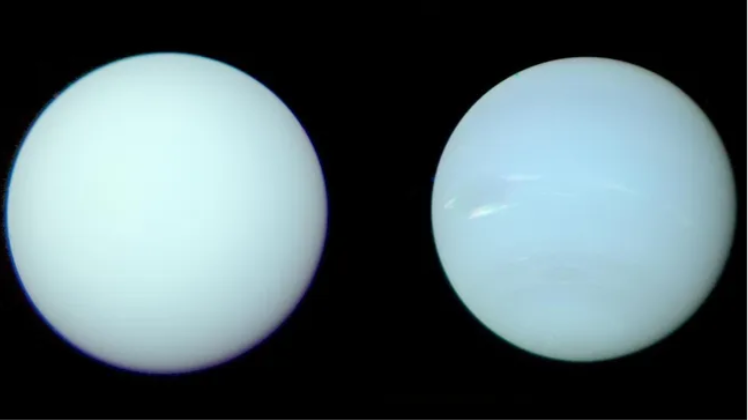Astronomers reveal true colors of Neptune and Uranus: Photo
 What Neptune and Uranus really look like (illustrative photo Freepik)
What Neptune and Uranus really look like (illustrative photo Freepik)
A new analysis of Uranus and Neptune images has revealed that both planets have a very similar shade of blue. Previously, it was believed that Neptune had a significantly more saturated color, closer to blue.
This is reported by RBC-Ukraine with reference to Space.
How planets really look
In the summer of 1989, the NASA spacecraft Voyager 2 transmitted the first images of Neptune from the distant reaches of our solar system.
The images showed that the farthest planet from the Sun, Neptune, was dark blue in color, while its planetary neighbor Uranus appeared noticeably paler.
They were roughly the same size, and were surrounded by an atmosphere of a similar composition, but they had different colors. This puzzled scientists for many decades.
However, a new analysis of Voyager 2 images reveals that both ice giants actually have a similar shade of greenish-blue.

Here is what the planets really look like (photo: Patrick Irwin)
Why did planets "have" different colors earlier
"Back in the late 1900s, the images Voyager 2 recorded of Uranus and Neptune were in single colors combined to create composite images that showed the planets to be cyan and azure, respectively. While Uranus' published pictures were processed close to its true color, early Neptune images had been stretched and enhanced to display its clouds, bands, and winds, and therefore made artificially too blue," explains the lead author of the study, Patrick Irwin, a planetary physicist from the University of Oxford in the United Kingdom.
He adds that the initial planet photographs were published with a note that the color was artificially intensified; however, over time, this important note "was lost."

The planets have the same hue (photo: Patrick Irwin)
To dispel the misconception, Irwin and his colleagues used new images from the NASA Hubble Space Telescope and the European Space Agency's Very Large Telescope. These instruments capture a rich spectrum of colors in each pixel, allowing their processing to determine the "true visible colors" of Uranus and Neptune.
It is also noted that the color of the planets comes from a layer of methane in their atmospheres, which absorbs the red color of sunlight.
The new research revealed that Uranus is slightly whiter, possibly because its somewhat "stagnant, milder" atmosphere allows the accumulation of methane haze, which reflects the red parts of sunlight to a greater extent than Neptune.
The presence of accumulated methane ice particles may also explain why Uranus slightly changes its color during its 84-year orbit around the Sun.

Shades of Uranus (photo: Patrick Irwin)
"The misperception of Neptune's color, as well as the unusual color changes of Uranus, have bedeviled us for decades. This comprehensive study should finally put both issues to rest," says Heidi Hammel from the Association of Universities for Research in Astronomy.
Earlier, we wrote about the approach of 5 asteroids to Earth.

